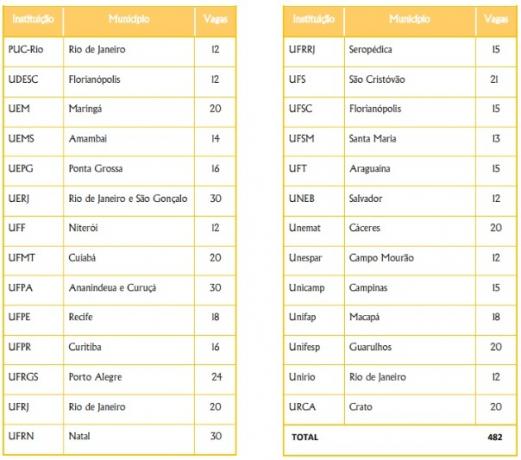During the announcement of an earthquake, it is always talked about how many degrees the phenomenon has reached on the Richter scale. But after all, what is this unit of measurement and how does it work?
The Richter scale was created in 1935 by the American seismologist Charles F. Richter, member of the California Institute of Technology. Richter, to carry out his scale, analyzed the seismic waves and collected numbers of several previously recorded earthquakes. This scale was developed to measure the magnitude of earthquakes, which is the act of quantifying the energy released at the focus of the earthquake.
It is a scale that starts at zero degree and is infinite (theoretically), however, an earthquake equal to or greater than 10 degrees on the Richter scale has never been recorded. One of the factors is that it is based on a logarithmic principle, that is, an earthquake of magnitude 6, for example, produces effects ten times greater than another one of 5, and so on. The most violent earthquakes ever recorded reached 9.2 degrees in Alaska in 1964 and 9.5 degrees in 1960 in Chile. Both have very high magnitudes and can cause total destruction of inhabited places, however, in the first case, the earthquake hit a sparsely inhabited region. The earthquake in Chile in 1960, on the other hand, hit a heavily populated area, causing the death of approximately 5,700 people, in addition to leaving more than 2 million injured.
The destructive power of an earthquake is not only related to its magnitude, that is, an earthquake of greater magnitude will not always be more destructive than one of lesser magnitude. Several factors influence this phenomenon: depth of the hypocenter (inner point where the main fracture occurs), the distance between the point and the epicenter (place where the greatest magnitude of the tremors is registered), the geological conditions and the engineering structure of the affected buildings.
In inhabited places, earthquakes can most often have the following effects:
- Less than 3.5 degrees: rarely noticed.
- From 3.5 to 5.4 degrees: Usually felt but rarely causes damage.
- Between 5.5 to 6 degrees: they cause small damage in well-structured buildings, however, their effects are devastating in buildings with poor structure.
- From 6.1 to 6.9 degrees: causes destruction in areas up to 100 kilometers in radius.
- From 8 to 8.5 degrees: it is considered a very strong shock, causing infrastructure destruction.
- From 9 degrees: total destruction.
By Wagner de Cerqueira and Francisco
Graduated in Geography
Source: Brazil School - https://brasilescola.uol.com.br/geografia/escala-richter.htm

